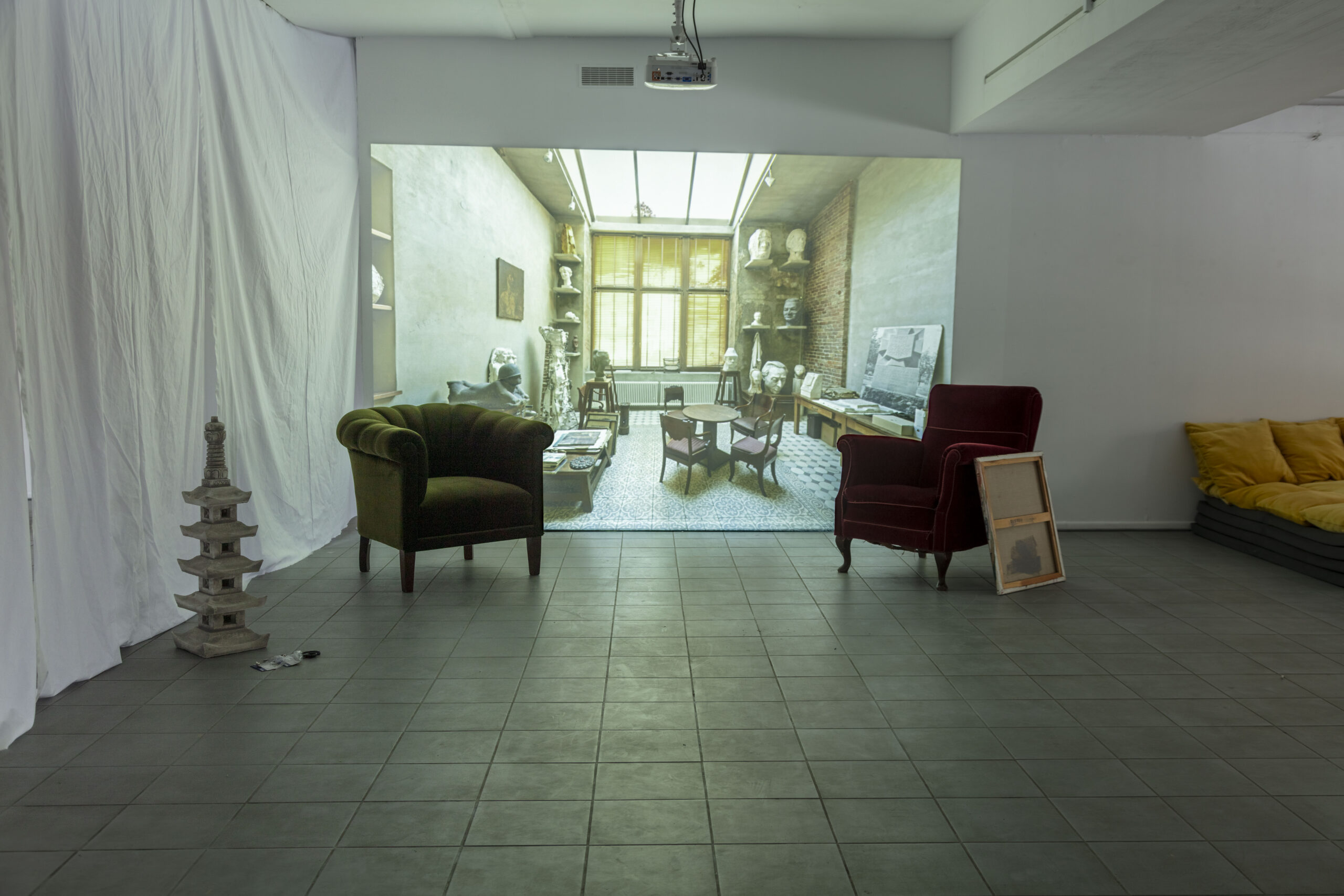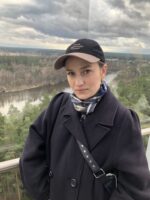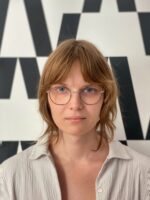Research project and exhibition
The Multispace of a Studio
8.12.23 – 14.12.23
Warsaw Observatory of Culture
Artists and curators: Jagoda Barwińska, Stanisław Bulder, Jan Gębski, Agnieszka Sadurska, Michał Stańczak, Aleksandra Tarka, dr Karolina Thel², Patrycja Wójcik
Coordination: Łukaszka Staszkiewicz
Content-related supervision: Vera Zalutskaya
The project is an attempt to explore what an art studio is. How do you come to be in possession of it? Is it a privilege or something that should be granted to artists? What are artists allowed to do in their studios and what do they actually do there?
As a curatorial and artistic team, we approached these questions through field and desk research. By visiting studios and contacting authorities, we tried to tell the story of a much under-reported phenomenon. The exhibition is the result of teamwork – it was crucial to listen to the voices of the artists and to discover the perspectives of people working in all the district administrative offices. The project is exploratory in nature and is an in-depth attempt to understand the issues that those who create art and culture face on a daily basis.
The exhibition is a visual report of our research findings. You will navigate through three levels of the exhibition that relate to different experiences. The ground floor reflects the institutional aspect of applying for a municipal art studio. Getting through the process is only the beginning and an essential part of obtaining the ‘right to rent commercial premises for use as a creative studio’ from the Property Management Division. The next stage is to go upstairs or downstairs, which symbolises the mechanism of the auction-based competition for studio leases. The basement reflects the inadequacies of the spaces in which artists often work. No heating or access to daylight, compact size, the economic necessity of sharing space with others – these are among the many difficulties faced by artists. The first floor is a representation of the perfect studio that most artists aspire to, but which is the privilege of a select few. It is presentable, stylish and spacious.
Municipal policy has a huge impact on the way artists work in Warsaw. The dream studio does not exist, at least for most people who create art. The Multispace of a Studio is an observant look at the creative workspaces in Warsaw – our focus is primarily on what the institutional eye cannot see.

View of the exhibition Wieloprzestrzeń pracowni at WOK Lab, photo by Lena Pierga

View of the exhibition Wieloprzestrzeń pracowni at WOK Lab, photo by Tomasz Jan Szymański i Maks Januszewicz

View of the exhibition The Multispace of a Studio at WOK Lab, photo by Lena Pierga

Aleksandra Tarka, I am an artist. I want to have a studio, graphics, 2023, photo by Lena Pierga
Stanisław Bulder, Jan Gębski
2/1
video, 2023
A microstudio, a microflat, a microart.
With my artworks I make a place to sleep.
Constantly, impartially, without rushing.

Stanisław Bulder, Jan Gębski, 2/1, video, photo by Lena Pierga

Stanisław Bulder, Jan Gębski, 2/1, video, photo by Lena Pierga
Michał Stańczak
Telephone
Installation, sound recording, 2023
What does communication between the municipal office and the artist look like? What difficulties await an artist when trying to obtain a studio? The work reflects the experience of contact with municipal real estate offices located on the outskirts of the city. The peripheries are artistically empty – you can check it by yourself. Just pick up the phone.

Michał Stańczak, Telephone, installation, sound recording, 2023, photo by Lena Pierga
Aleksandra Tarka
I am an artist. I want to have a studio.
Graphics, 2023
Diagram is presenting formal processes for acquiring a studio from the municipality. The source of knowledge were conversations with officials and law regulations regarding obtaining premises. Seemingly, there is nothing simpler than to proceed step by step. Is it really that easy?

Aleksandra Tarka, I am an artist. I want to have a studio, graphics, 2023, photo by Lena Pierga

View of the exhibition The Multispace of a Studio at WOK Lab, photo by Lena Pierga
Dr.2 Karolina Thel
Basement
Installation, 2023
Work represents the vision of a studio in which artists who do not have a “dream studio” create. Chaos, tightness, limitations, discomfort. Can creativity be born in such conditions? According to research, interesting artistic activities can occur even in basements. The installation is not only an attempt to convey the space of artistic work, but also often the home-like conditions.

View of the exhibition The Multispace of a Studio at WOK Lab, photo by Lena Pierga

Dr2 Karolina Thel, Basement, installation, 2023 and Stanisław Bulder, Jan Gębski, 2/1, video, photo by Lena Pierga
Patrycja Wójcik
Overflow/Transfer
Collage, 2023
When does an artist decide to acquire his/her/their own studio? According to conversations with artists, it was most often the moment when their home space could no longer meet the conditions for creative work. Too many artworks, too many tools, too little space. The collage is a visual note from conversations about experiences of artists.

Patrycja Wójcik,Overflow/Transfer, collage, 2023, photo by Lena Pierga
Agnieszka Sadurska
Health path
Installation, 2023
The installation is a visual interpretation of the difficulties encountered by artists between their private lives and professional creative work. It is an answer and an indication of how difficult it is to balance between these two worlds. One will finally succeed and reach the “dream studio”… or not. Will everyone be able to avoid the traps of administrative organization?

View of the exhibition Dom dla zmyślonych przyjaciół Jaśka in the studio of Jan Możdżyński, photo by Lena Pierga





